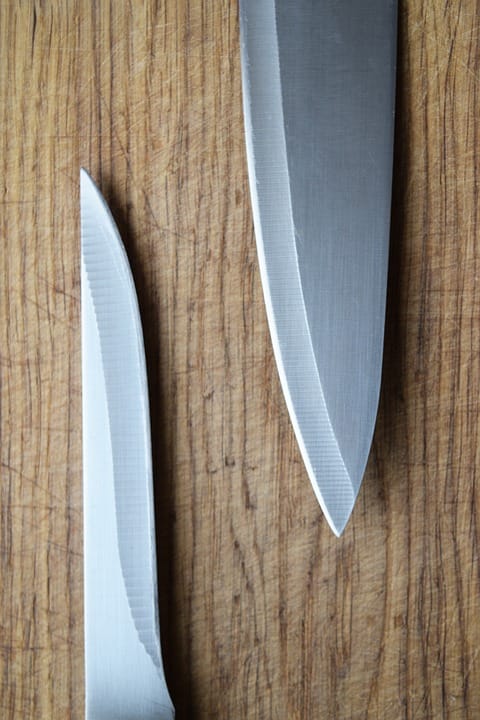The Ultimate Guide to Choosing the Right Knife for Your Needs
Choosing the right knife can be a daunting task, especially with the numerous options available in the market. As an enthusiast of pocket knives, I’ve compiled this comprehensive guide to help you make an informed decision. In this article, we’ll explore the various types of knives, their features, and the factors to consider when selecting the perfect knife for your needs.
Understanding the Different Types of Knives
Before we dive into the specifics, it’s essential to understand the different types of knives available. Here’s a breakdown of the most common types:
| Type | Description | Best for |
|---|---|---|
| Folding Knives | Knives with a folding mechanism, allowing for easy storage and portability | Everyday carry, outdoor activities, and self-defense |
| Fixed Blades | Knives with a fixed blade, often used for heavy-duty tasks | Hunting, camping, and outdoor activities |
| Pocket Knives | Small, compact knives designed for everyday carry | Everyday tasks, such as cutting, opening packages, and self-defense |
| Serrated Knives | Knives with a serrated edge, ideal for cutting through tough materials | Outdoor activities, such as cutting rope or branches |
| Straight Edge Knives | Knives with a straight edge, suitable for fine cutting and precision work | Cooking, crafting, and self-defense |
Factors to Consider When Choosing a Knife
When selecting a knife, there are several factors to consider. Here are some key points to keep in mind:
| Factor | Description | Why it Matters |
|---|---|---|
| Blade Material | The type of material used for the blade, such as stainless steel, carbon steel, or titanium | Affects durability, rust resistance, and edge retention |
| Blade Length | The length of the blade, measured from the tip to the handle | Affects the knife’s overall size, maneuverability, and cutting capacity |
| Handle Material | The material used for the handle, such as wood, metal, or plastic | Affects grip, comfort, and durability |
| Ergonomics | The design and shape of the handle, affecting comfort and control | Essential for comfortable use and reducing fatigue |
| Locking Mechanism | The mechanism used to secure the blade in place, such as a liner lock or frame lock | Affects the knife’s safety and reliability |
| Weight and Balance | The weight and balance of the knife, affecting its overall feel and handling | Important for comfortable use and reducing fatigue |
The Importance of Ergonomics
Ergonomics play a crucial role in the design of a knife. A well-designed handle should provide a comfortable grip, reducing fatigue and improving control. Here are some key considerations:
- Grip Size: The handle should fit comfortably in your hand, with a grip size that suits your hand size and shape.
- Contouring: The handle should have a contoured design, allowing your hand to fit naturally and reducing fatigue.
- Texture: The handle should have a textured surface, providing traction and preventing slipping.
Choosing the Right Blade Material
The blade material is a critical factor to consider when selecting a knife. Here are some popular options:
- Stainless Steel: A popular choice for its rust resistance and durability.
- Carbon Steel: A high-carbon content provides excellent edge retention and sharpness.
- Titanium: A lightweight and corrosion-resistant option, ideal for outdoor activities.
The Role of Edge Retention
Edge retention is a critical factor in determining a knife’s performance. Here are some key considerations:
- Edge Angle: A sharp edge angle (around 20-30 degrees) provides excellent cutting performance.
- Edge Bevel: A well-designed edge bevel ensures a smooth, even cutting surface.
- Sharpening: A knife with a sharp, easy-to-sharpen edge is essential for maintaining its performance.
The Ultimate Guide to Choosing the Right Knife for Your Needs
In conclusion, choosing the right knife requires careful consideration of several factors, including the type of knife, blade material, handle material, ergonomics, locking mechanism, and weight and balance. By understanding these factors and considering your specific needs, you can find the perfect knife for your requirements.
Frequently Asked Questions
What is the best type of knife for self-defense?
A folding knife with a locking mechanism is a popular choice for self-defense, as it provides a secure and reliable way to carry a knife.
What is the best material for a knife blade?
The best material for a knife blade depends on your specific needs. Stainless steel is a popular choice for its rust resistance and durability, while carbon steel provides excellent edge retention and sharpness.
How do I choose the right handle material?
The handle material should be comfortable, durable, and provide a secure grip. Consider factors such as grip size, contouring, and texture when selecting a handle material.
What is the importance of ergonomics in a knife?
Ergonomics play a crucial role in the design of a knife, providing a comfortable grip, reducing fatigue, and improving control.
Conclusion
Choosing the right knife can be a daunting task, but by understanding the different types of knives, factors to consider, and key considerations, you can find the perfect knife for your needs. Remember to prioritize ergonomics, edge retention, and durability when selecting a knife, and don’t hesitate to ask questions or seek advice from experts in the field. With the right knife, you’ll be well-equipped to tackle any task or situation that comes your way.
